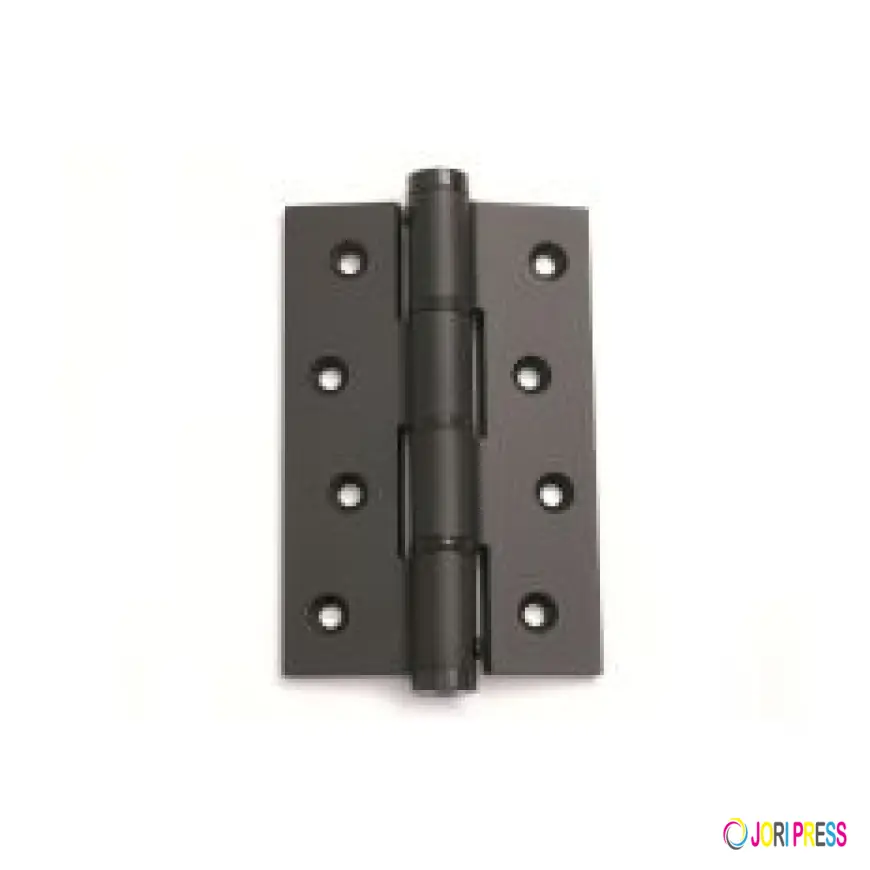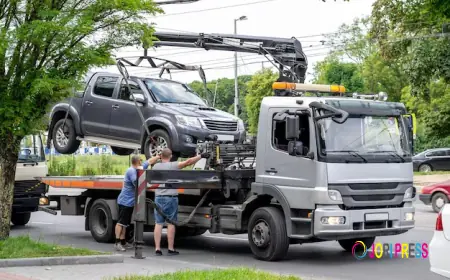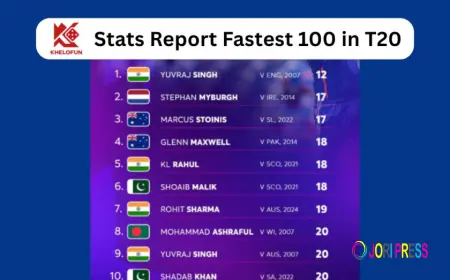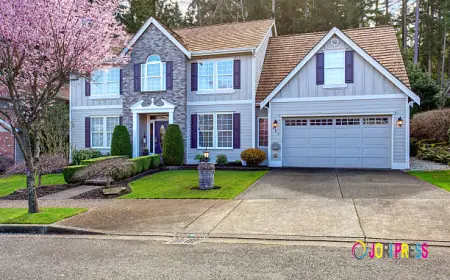Spring Hinges vs. Door Closers: What's the Difference?
Compare spring hinges vs. door closers. Discover how each mechanism works to close a door, their primary applications, and which solution offers better control and fire safety.

You need a door that closes automatically, but you're faced with a choice: spring hinges or door closers? While both accomplish the same basic goal—ensuring doors close on their own—they work in fundamentally different ways and suit different applications.
Understanding the differences between these two solutions will help you choose the right option for your specific needs, budget, and aesthetic preferences. This guide breaks down everything you need to know about spring hinges and door closers.
What Are Spring Hinges?
Spring hinges are modified door hinges with an internal spring mechanism that automatically returns the door to its closed position after opening. They look like standard hinges but contain a coiled spring within the barrel that creates tension, pulling the door closed.
Key characteristics:
-
Integrated into the hinge itself
-
No visible hardware on door face
-
Simple mechanical operation
-
Requires no additional installation beyond hinge mounting
-
Available in single-action (swing one direction) or double-action (swing both directions)
What Are Door Closers?
Door closers are separate mechanical devices mounted either on the door surface or concealed in the door/frame. They use hydraulic or pneumatic mechanisms to control the door's closing speed and force, providing a smooth, controlled closure.
Key characteristics:
-
Separate device from hinges
-
Visible hardware (for surface-mounted models)
-
Adjustable closing speed and force
-
Hydraulic or pneumatic operation
-
Can include hold-open features and delayed closing
How They Work: The Mechanics
Spring Hinge Operation
When you open a door with spring hinges, you're compressing or extending a spring inside the hinge barrel. This stored energy is released as the door swings back, pulling it closed. The closing force is consistent and proportional to how far the door is opened.
The spring provides constant tension throughout the closing cycle, resulting in faster closing speeds that can't be adjusted. The door closes with the same force every time unless the spring tension is physically adjusted.
Door Closer Operation
Door closers use fluid dynamics to control door movement. When the door opens, hydraulic fluid is forced through valves into a reservoir. As the door closes, the fluid flows back through adjustable valves, creating resistance that slows and controls the closing motion.
This allows for sophisticated control: fast initial closing, slower final closing (latching speed), and adjustable closing force. Premium models offer additional features like backcheck (resistance to prevent wall damage from slamming open) and delayed action.
Key Differences at a Glance
Aesthetics
Spring Hinges: Virtually invisible when the door is closed. No additional hardware clutters the door or frame. Perfect for maintaining clean, minimalist aesthetics.
Door Closers: Surface-mounted models are highly visible, which some find unappealing. Concealed closers solve this but increase installation complexity and cost.
Adjustability
Spring Hinges: Limited adjustability. Some models allow tension adjustment via set screws, but fine-tuning closing speed isn't possible. Once installed, performance is largely fixed.
Door Closers: Highly adjustable. Most closers offer independent control of closing speed, latching speed, and closing force. Can be fine-tuned for specific door weight, wind conditions, and user preferences.
Installation Complexity
Spring Hinges: Install exactly like standard hinges. If you can hang a door, you can install spring hinges. No additional mounting, just replace existing hinges with spring hinges.
Door Closers: More complex installation requiring precise measurement and mounting. Surface-mounted closers need template positioning, drilling, and adjustment. Concealed closers require significant door and frame modification.
Cost
Spring Hinges: $15-60 per hinge. Budget-friendly option, especially since you're replacing hinges you'd need anyway. Total door cost: $45-180 for three hinges.
Door Closers: $50-300+ per closer depending on quality and features. Commercial-grade closers easily exceed $200. Installation costs add $100-300 if hiring professionals.
Durability and Lifespan
Spring Hinges: Simple mechanism means fewer failure points. Springs eventually weaken but typically last 10-20 years with normal use. No maintenance required beyond standard hinge lubrication.
Door Closers: More complex mechanism means more potential failure points. Hydraulic seals can leak, fluid can degrade, and adjustments can drift. Quality closers last 15-25 years with proper maintenance but require periodic adjustment and occasional fluid replacement.
Closing Force
Spring Hinges: Moderate, consistent force. Adequate for most residential applications but limited capacity for heavy doors or high-wind situations.
Door Closers: Variable and adjustable force suitable for any door weight. Can handle commercial traffic loads, fire door requirements, and challenging environmental conditions.
Best Applications for Spring Hinges
Residential Interior Doors
Basement doors, laundry rooms, pantries, and garage access doors benefit from spring hinges' simplicity and clean appearance. Perfect for doors you want to close automatically without visible hardware.
Screen Doors and Storm Doors
Lightweight screen and storm doors are ideal spring hinge candidates. The moderate closing force is sufficient, and the clean appearance maintains curb appeal.
Residential Exterior Doors (Limited)
Light to medium-weight exterior doors in protected locations can use spring hinges, though door closers generally perform better for security and weather sealing.
Gate Applications
Garden gates, fence gates, and similar applications benefit from spring hinges' simplicity and weather resistance (with proper material selection).
Budget-Conscious Projects
When automatic closing is desired but budget is limited, spring hinges provide adequate functionality at minimal cost.
Best Applications for Door Closers
Commercial Applications
Building codes often require door closers for commercial buildings, especially on fire doors, stairwell doors, and exterior entrances. Door closers meet these requirements while handling high-traffic use.
Heavy Doors
Solid wood, metal, or oversized doors exceed spring hinge capacity. Door closers provide the necessary force and control for doors over 100 lbs.
ADA Compliance
Americans with Disabilities Act requirements specify maximum opening force and minimum closing time. Adjustable door closers can be precisely tuned to meet these requirements; spring hinges cannot.
Fire-Rated Doors
Fire codes require specific closing characteristics that only door closers can provide. Fire-rated door closers are tested and certified for this critical safety function.
High-Wind Environments
Doors exposed to significant wind pressure need the adjustable force and control that door closers provide. Spring hinges lack the power to overcome strong winds reliably.
Security Applications
Doors requiring guaranteed closure for security purposes (exterior doors, server rooms, medication storage) need the reliability and adjustability of door closers.
Accessibility Requirements
When doors must accommodate various users—from children to elderly to wheelchair users—adjustable door closers allow proper tuning for universal accessibility.
Combining Spring Hinges and Door Closers
In some situations, using both makes sense. Installing spring hinges plus a door closer provides:
-
Redundancy if the closer fails
-
Reduced load on the closer, extending its lifespan
-
Smoother operation with less adjustment needed
-
Backup closure if closer is intentionally held open
This is common in commercial applications where door closure reliability is critical.
Making Your Decision: Key Questions
What's the door weight?
-
Under 75 lbs: Spring hinges adequate
-
75-150 lbs: Either option works
-
Over 150 lbs: Door closer required
What's your budget?
-
Limited: Spring hinges
-
Moderate to high: Door closer provides better value long-term
Are aesthetics critical?
-
Yes: Spring hinges (or concealed door closer)
-
No: Surface-mounted door closer acceptable
Do you need adjustability?
-
No: Spring hinges sufficient
-
Yes: Door closer essential
Is code compliance required?
-
Yes: Door closer (verify specific requirements)
-
No: Either option works
How heavy is the traffic?
-
Light residential use: Spring hinges adequate
-
Heavy use: Door closer more durable
What's the environment?
-
Protected interior: Either works
-
Exposed exterior or harsh conditions: Door closer preferred
Installation and Maintenance Considerations
Spring Hinges
Installation: Replace existing hinges following standard hinge installation procedures. Ensure proper alignment and use appropriate screws (3+ inches into framing).
Maintenance: Annual lubrication with silicone spray. Check for loose screws. Replace when spring weakens (door no longer closes fully).
Door Closers
Installation: Follow manufacturer templates precisely. Surface-mounted closers require drilling 4-8 holes. Concealed closers need significant door modification.
Maintenance: Check and adjust closing speed seasonally. Inspect for hydraulic leaks. Tighten mounting hardware annually. Professional service recommended every 3-5 years for commercial applications.
Common Mistakes to Avoid
Spring Hinges:
-
Using on doors too heavy for spring capacity
-
Installing only one or two spring hinges (use three for reliable closing)
-
Over-tightening adjustment screws (can break internal mechanism)
Door Closers:
-
Incorrect mounting position (follow template exactly)
-
Over-adjusting valves (can damage hydraulic mechanism)
-
Installing closers rated below door weight
-
Neglecting seasonal adjustments for temperature changes
Conclusion
The choice between spring hinges and door closers isn't about which is "better"—it's about which better suits your specific application. Spring hinges offer simplicity, clean aesthetics, and economical automatic closing for light to medium doors in residential settings. Door closers provide adjustable, powerful, code-compliant control for heavy doors, commercial applications, and situations requiring precise closing characteristics.
For most residential interior doors, spring hinges are the smart choice. For commercial applications, heavy doors, or situations requiring specific closing behavior, door closers are worth the additional investment. Understanding these differences ensures you'll select the right solution for reliable, appropriate automatic door closing.
What's Your Reaction?
 Like
0
Like
0
 Dislike
0
Dislike
0
 Love
0
Love
0
 Funny
0
Funny
0
 Angry
0
Angry
0
 Sad
0
Sad
0
 Wow
0
Wow
0
















































